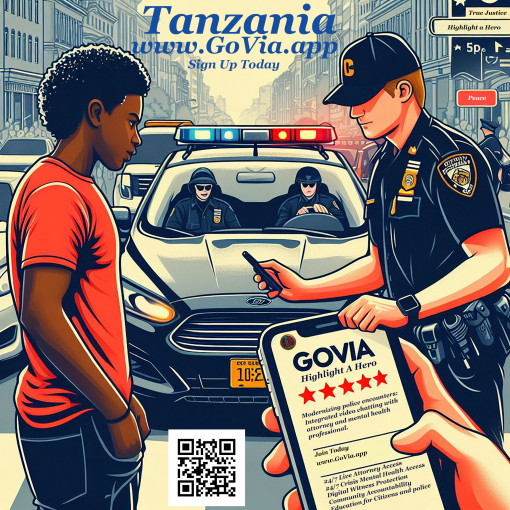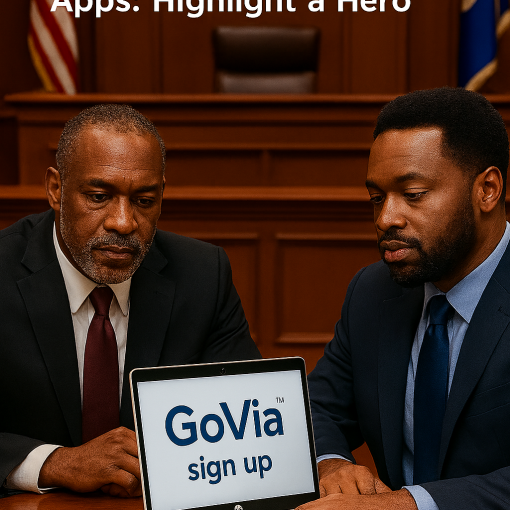GoVia: Highlight A Hero (hereafter “GoVia”), tracing its promise and positioning, and highlighting the crucial endorsements from major figures — especially Les Brown, Dr. George C. Fraser, Professor Lewis R. Katz (CWRU), W. Scott Ramsey (attorney), Isaiah N. Johnson (NFL veteran). The article also presents why and how law-enforcement agencies should seriously consider joining forces with this platform to improve the safety and legitimacy of police–community encounters.
The Challenge: Community-Police Encounters and the Need for New Solutions – (2 min video overview GoVia)
In the United States, the interface between law enforcement officers and members of the public—especially in urban, minority, or economically disadvantaged communities—continues to be a fraught terrain. Disparities in stops, arrests, use of force, and resulting community distrust are extensively documented. While many reforms concentrate on training, body-cams, oversight commissions and consent-decrees, technological and behavioral innovations remain under-leveraged.
Enter the concept of a mutual accountability platform: an app that serves not just as a recording or complaint tool but as a structured interface where community members and officers both participate in a feedback/ratings process, create transparency, and build trust.
GoVia presents itself as one such solution: a digital ecosystem designed to provide “a good encounter for everyone” by integrating ratings, real-time recording, data collection, and bridging community and police perspectives.
The relevance is heightened in a city such as Cleveland, Ohio, where the Cleveland Division of Police (CDP) operates under a federal consent decree (monitoring team reports) and where community-police relations remain a central reform challenge. (clecpc.org)
Thus, GoVia addresses three core needs:
- Mechanism for community voice and data collection;
- Mechanism for officer accountability (and potentially positive recognition);
- Bridge between community and law enforcement to rebuild trust where institutional credibility is weak.
GoVia: Highlight A Hero – Overview
GoVia positions itself as a “Community Police Safety App & Safe Encounter” platform. According to its website:
- “Everyone deserves a good encounter.”
- The platform reports 31,000 subscribers across the U.S. and internationally (Tanzania, India, Vietnam, Hong Kong, UK) as of its latest update.
- The system offers both “rate the police” and “police rate you” functionality, with the goal of—among other things—profiling encounters and giving users some awareness of who they may be about to interact with. (As mentioned in Johnson’s testimonial below.)
- It explicitly references existing consent-decrees and data from police-violence reporting projects — pointing to the timeliness of a technological intervention.
Given that the platform is still in the process of full launch/patent development (per the website’s call for seed capital) the endorsement of high-profile voices adds legitimacy.
Endorsements & Key Voices
Here we highlight the key public voices supporting GoVia, including their background, relevance to policing/community work, and how their endorsements strengthen the case.
Les Brown Talks about GoVia
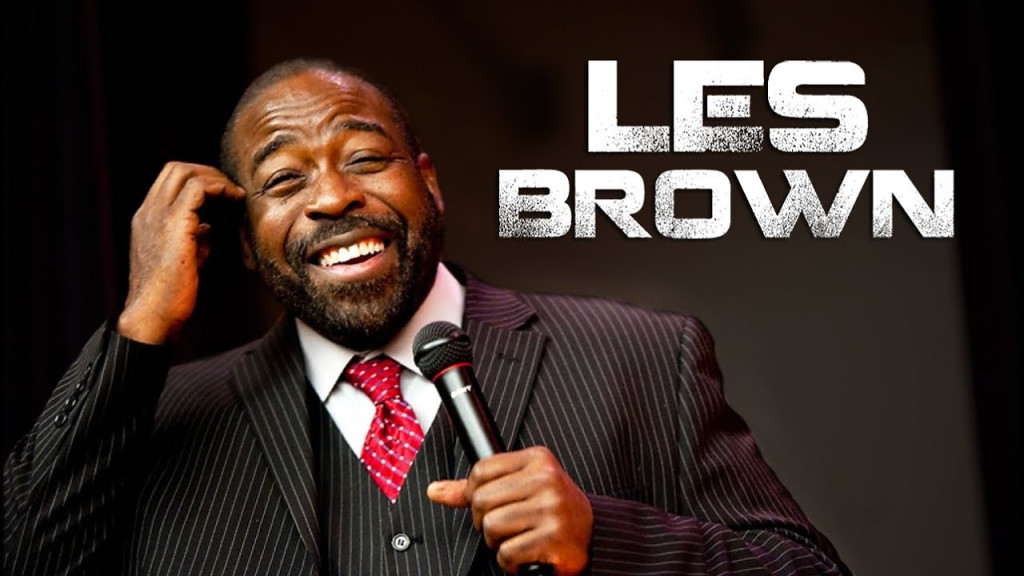
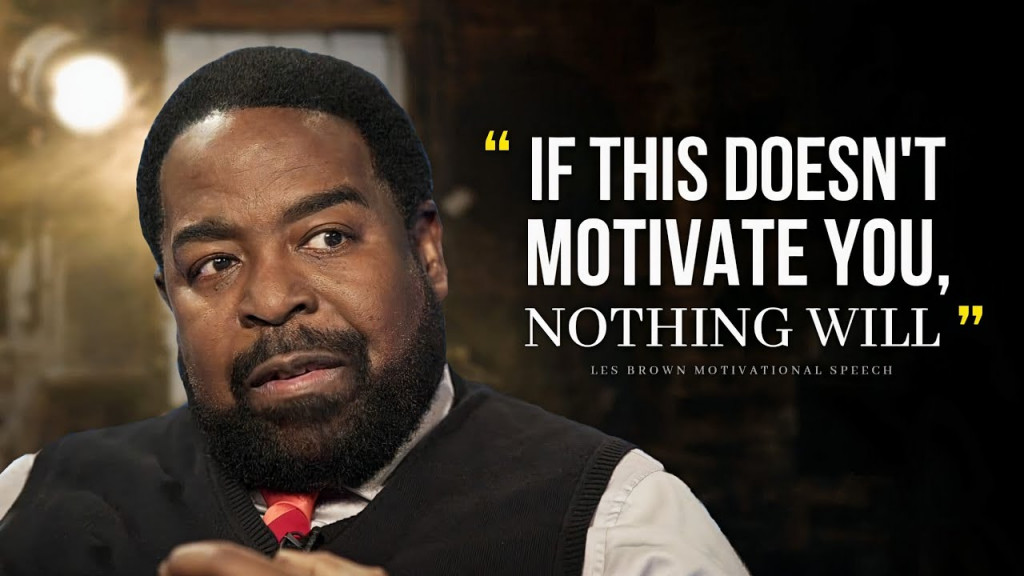
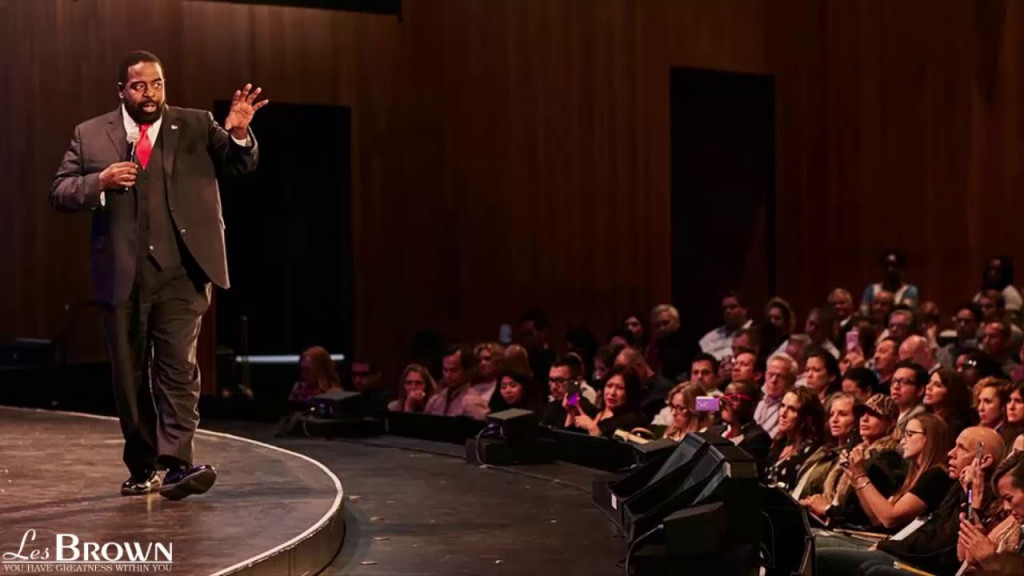
Les Brown is widely known as a global motivational speaker and author. His official site describes him as: “one of the world’s most renowned motivational speakers … a dynamic personality … a highly-sought-after resource in business and professional circles…” (Les Brown (Main Site))
In his endorsement of GoVia, Brown focuses on the disproportionate rates at which people of color are stopped by police, framed, or worse—as he puts it, “killed” in some cases. His testimonial emphasizes that GoVia’s rating and camera-interactive features can make officers more conscious of their behavior (since “they know they’re being seen”), thereby potentially reducing abuse and violence. His emphasis is strongly on the community safety and accountability dimension.
His statement:
“You have something special … I want to talk to you about a device that I believe that can to a great degree reduce the killings of people of color by police… The camera … will make officers aware that they’re being seen online and they’ll become more mindful and conscious of their behavior …” (Video Testimonial)
Given Brown’s background—rising from adversity, being labelled “educably mentally retarded” in school, rising to prominence as a speaker—his voice adds moral force to the message: this is about human dignity, equity and accountability. (The Singju Post)
Dr. George C. Fraser


Dr. George C. Fraser is a Cleveland-based author, entrepreneur and speaker, founder of FraserNet and the PowerNetworking Conference, with a strong emphasis on economic empowerment, networking, diversity and wealth creation. (Speakers.com)
His endorsement of GoVia stresses the innovative nature of applying digital accountability tools in the justice/police-community domain. His quote:
“One of the most important suites of apps that I have seen in the last decade … it is very innovatively done and very simply done … I have never seen that applied to justice … I’m behind it a hundred percent.”
Dr. Fraser’s role brings the dimension of business leadership, community-empowerment mindset, and African-American entrepreneur credibility. His backing adds a strategic framing: this is not just a tech novelty, but a tool for equitable justice and systemic change.
Professor Lewis R. Katz (CWRU)


Professor Lewis R. Katz, Professor Emeritus of Law at Case Western Reserve University (CWRU), has expertise in criminal law, procedure, arrest/search/seizure and police issues. (lawresearchguides.cwru.edu)
He has served as co-chair of the Cleveland Community Police Commission and has publicly weighed in on reform issues such as the federal consent decree relating to the CDP. (Spectrum News 1)
His testimonial:
“I … just became familiar with GoVia, and I think that there are elements … that could help to make the Cleveland police division meet the standards imposed by the consent decree and become the police department that we in Cleveland want and need.”
This is perhaps the most institutionally resonant endorsement: from an academic and oversight stakeholder deeply familiar with law enforcement reform. His support implies that GoVia may align with compliance objectives (consent-decree standards, data/monitoring, accountability).
W. Scott Ramsey (Attorney)

W. Scott Ramsey is a criminal defense attorney in Cleveland (Law Office of W. Scott Ramsey). (FindLaw Lawyers)
While fewer publicly available quotes are captured, his inclusion in the GoVia “Law” section of the website suggests his role as legal advisor/endorser for the app’s law-enforcement and civil-rights interface.
Having a defense-law attorney’s endorsement helps in two ways: credibility from the civil-rights/law-enforcement viewpoint, and indication of legal diligence (privacy, data, liability) in the app’s design.
Isaiah N. Johnson (NFL Player, Entrepreneur, Speaker)

Isaiah N. Johnson is a former NFL player, entrepreneur and motivational speaker. According to his website, he played for the Detroit Lions, Los Angeles Rams, Indianapolis Colts; earned degrees (BS in Business Management with marketing/finance concentration; Master’s in Building Construction) from Georgia Tech. (Isaiah N Johnson)
In his testimonial (as you provided), he emphasizes the personal dimension of the community–police interaction from the vantage of a Black man: feeling insecure even in routine stops; the idea of using a rating-system for police officers (analogous to Uber/restaurant ratings) to provide sense of relief and choice. His statement:
“We already rate everything in life… Why can’t we rate our interaction with a police person? … I would love to know if I’m getting pulled over who … what kind of person I’m about to deal with. If this man has one star, two stars, or five, that’s gonna change my posture a little bit.”
Johnson adds the sports-leadership credibility and speaks directly to the lived-experience of risk and uncertainty in police encounters. His voice helps translate the technology idea into human lived-reality.
Why the Police Should and Need to Join Forces with GoVia
From the vantage of a law-enforcement agency, partnering with or adopting GoVia offers multiple potential advantages—some rooted in operational benefit, others in public-relations/trust, and still others in future-proofing for reform. Here are key arguments:
- Transparency Builds Trust
In many cities, including Cleveland, a large part of the community distrust of police arises from a sense of un-accountable power, opaque decision-making, and perceived impunity. By participating in a system where officers are rated, and interactions are tracked in a transparent system, it signals a willingness to open the “black box” of policing. Over time, positive ratings/feedback can become a credibility asset for individual officers and for the whole department. - Data & Metrics for Reform Compliance
For departments under consent-decree or court-monitoring, one of the persistent challenges is capturing meaningful data on stops, arrests, force incidents, complaints, etc. A platform like GoVia, if properly implemented, can feed structured data into oversight dashboards — helping departments show progress, identify outlier behaviors, and proactively manage risk. As Professor Katz noted, elements of GoVia “could help … meet the standards imposed by the consent decree”. - Officer Safety & Risk Reduction
An often-underappreciated dimension: officers can benefit when the public encounter is more predictable, less adversarial, and documented. If interactions are digitally logged, rated, and visible (with appropriate privacy safeguards), this can reduce false-allegation risk, improve situational awareness, and potentially reduce use-of-force escalations. GoVia’s dual-rating model (community rates police; police rate citizens) creates a mutual accountability environment. - Public Outreach & Community Partnerships
By joining a platform widely supported in the community (and with national/international reach, per GoVia’s cited subscriber base), a police agency signals willingness to engage with community-led innovation rather than resist it. This helps shift the narrative from “us vs them” to “we’re building this together”. High-profile endorsements (Brown, Fraser, Katz, Johnson) help frame the app as a progressive tool rather than a “citizen complaint device”. - Innovation and Future-Proofing
Policing is evolving: body-cams, use of AI/analytics, smartphone recording, community apps, etc. A forward-looking department that embraces such technology early positions itself better for future expectations (public, legal, oversight). By partnering with GoVia, a department can avoid being reactive to public pressure and instead become proactive in shaping how community-police digital interfaces work. - Moral and Strategic Imperative
For departments with strong leadership committed to equitable policing, GoVia offers a tool aligned with mission: safe, fair, respectful public safety. Particularly in communities where minority citizens feel disproportionally targeted or endangered, the app’s promise of providing “a sense of relief” (per Johnson) and accountability (per Brown) aligns with ethical policing. It is not just an optional added app: it becomes a matter of institutional legitimacy.
Key Considerations, Risks and Implementation Best-Practices
Any innovative tool must be implemented carefully; otherwise, it may under-deliver or worse backfire. Below are considerations and best-practices for a department considering GoVia:
- Privacy and Data Protection: Both citizens and officers need assurance that sensitive data (video/audio, ratings, demographics) is protected, not mis-used, and that access/retention policies are transparent.
- Integration with Existing Systems: The app should link with departmental case management, complaint tracking, training modules, oversight commissions, and analytics rather than exist in isolation.
- Officer Buy-in and Training: Without officer trust, rating systems can be viewed as threats or “gotcha” tools. Clear training, transparency about how the data will be used (not for punitive first, but improvement, recognition, risk management) is essential.
- Community Outreach and Education: Citizens must understand how to use the app, what ratings mean, how to interpret them responsibly, and what recourse exists for disputes.
- Monitoring and Evaluation: Departments should set clear KPIs (e.g., reduction in civilian complaints, decrease in use-of-force incidents, improved community survey scores), evaluate the impact over time, and adjust deployment as needed.
- Avoiding Unintended Consequences: Rating systems can create gaming, bias, or misuse (e.g., officers avoiding certain types of stops to preserve ratings; citizens mis-using ratings). Clear rules, audit controls, and transparency are vital.
- Funding and Sustainability: Given that GoVia’s website mentions seed capital/scale-up costs, departments may need to partner on funding, ensure long-term maintenance, and align with existing budgets or grants.
Why GoVia’s Model Matters in Cleveland (and Beyond)
Given the local context of Cleveland (consent-decree oversight, community-trust deficits, demographic patterns) and more broadly across U.S. cities, GoVia’s model is timely and relevant.
- Professor Katz’s involvement ties directly to the Cleveland reform mandate, giving local institutional relevance.
- The presence of Dr. Fraser (Cleveland-based) anchors the initiative in local economic/community leadership.
- Johnson’s testimony highlights the lived-experience of minority communities interacting with police—and the psychological dimension (“sense of relief”) that a ratings tool can provide.
- Brown’s endorsement expands the narrative: this is not just local or technical; this is a justice/empowerment movement.
- Attorney Ramsey’s role assures the legal credibility and risk-management dimension is addressed.
- The fact that GoVia already claims 31,000 subscribers internationally suggests scalability and external validation.
For any Cleveland agency of the CDP or its oversight stakeholders, embracing GoVia could be framed as a strategic pilot—not replacement of existing mechanisms, but augmentation with digital accountability and community voice. If successful, it could serve as a replicable model for other municipalities.
GoVia’s Take
GoVia: Highlight A Hero stands at the intersection of community empowerment, policing reform, and digital innovation. With high-profile support from thought-leaders like Les Brown, Dr. George C. Fraser, Professor Lewis R. Katz, W. Scott Ramsey, and Isaiah N. Johnson, the app’s credibility aligns with both moral urgency and strategic promise.
For law-enforcement agencies, the question is not merely: “Should we adopt this app?” but rather: “Can we afford not to participate in platforms that citizens increasingly trust and expect?” In an era of heightened scrutiny, declining public trust, and accelerating technological disruption of public safety, GoVia presents a compelling tool for building safer, more equitable police–community encounters.
Implementation will require care, transparency, training and deliberate monitoring—but the potential payoff is significant: improved community trust, reduced risk, better data for oversight, and a more accountable and effective policing system.
In short: GoVia isn’t merely a “nice-to-have.” It is potentially a must-have in the modernization of community-police relationships—and the endorsements above underline that conviction.


